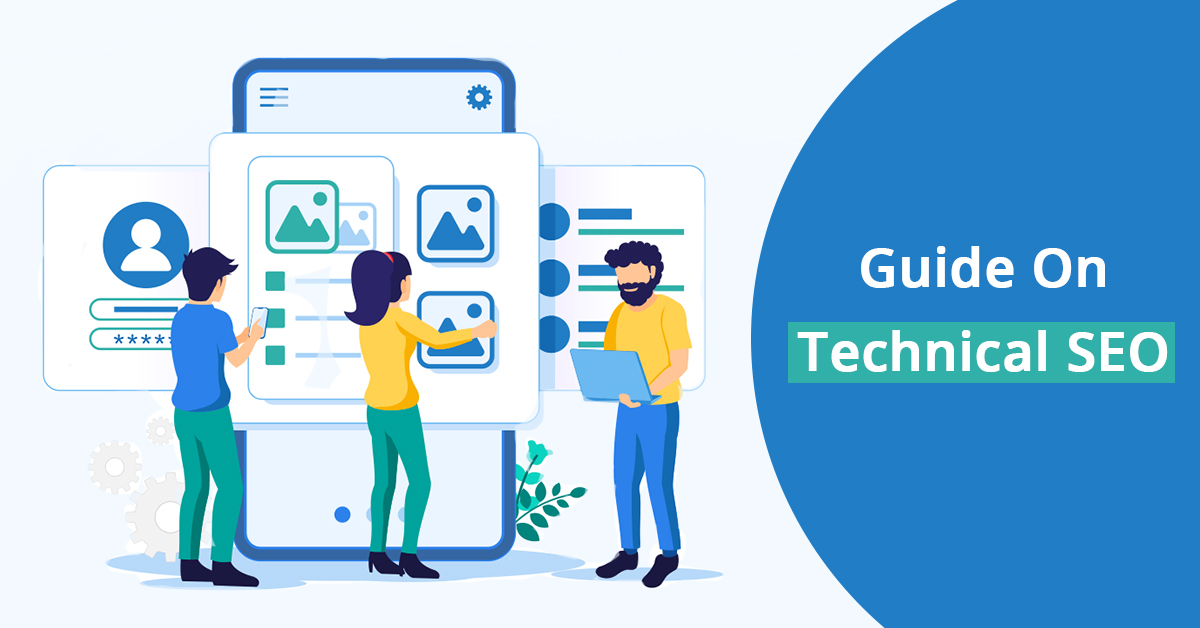
Did you know that organic search contributes 55% of trackable website traffic? This indicates that the vast majority of searchers on the Internet are finding websites with strong SEO.
SEO (search engine optimization) is a set of strategies used by website developers to ensure that their sites appear at or near the top of search engine results pages. There are many kinds of SEO, including technical SEO, which involves optimizing a site's structure and content.
That's why we wrote Technical SEO: The Complete Guide. Technical SEO focuses on the more technical details of your website that you may not have considered. But, with our assistance, you'll be an expert in no time. Continue reading if you wish to learn more.
What Is Technical SEO and What Does It Mean?

Technical SEO is defined by the search engines as a subset of on-page SEO that focuses on the technological criteria a website must satisfy in order to follow standard search engine optimization principles. The higher these technical standards are, the greater the chance that the website will appear higher in search engine results pages.
Technical SEO entails a variety of topics. These include website architecture, crawling, indexing, rendering, and more. The specifics of technical SEO work in tandem with content planning and link-building to help your website's pages rank higher in search results. A firm commitment to all of these techniques will aid your sites' visibility.
Why Is Technical SEO So Crucial?
The major cause of technical SEO's prominence is that search engines are limited in what they can do. They're good and successful, but they aren't flawless in crawling and indexing. Given that these activities are essential for determining online pages, you want to make sure they perform them correctly.
Search engines, on the other hand, can't handle complex tasks as well. As a result, you need to make modifications to your website in order for search engines to understand what your online pages are about.
If a search engine can't figure out what your website is about, it will move on to the next without ranking it. As a result, you want to make sure that your content is more than simply excellent.
You want to make it easy for people to discover and consume your material. That's the technical SEO component of this equation.
A Technical SEO Primer: A Quick History of Technical SEO
Despite the fact that technical SEO has been around for only a few years, it has made significant progress. Since the early 2000s, technical SEO's importance has been on the rise. And with it, strategies and demands have evolved:
- The early 2000s: Technical SEO is born from the importance of website crawlability and indexability
- The mid-2000s: Keyword-stuffing and link-buying dominate while Google struggles to keep up with these tactics
- The late 2000s: Google begins to catch up, rendering keyword-stuffing and link-buying ineffective
- The early 2010s: Google encourages quality content and linking, clamping down on ranking privileges
- The mid-2010s: Developers focus on delivering great experiences while using creativity in SEO practices
- 2015-2016: Content becomes spread across multiple platforms and voices
- 2017: Mobile use surpasses desktop use as voice search and digital assistants become more prominent
- 2018-2020: Search has taken over and SEO is everywhere.
As the demands of customers have evolved, so too have SEO guidelines. It's also worth noting how instrumental Google's operations were in developing technical SEO as we know it today.
A New Method: Optimizing Your Website, Search Results, and Content
Technical SEO is all about achieving three distinct objectives:
- You want to optimize the site for visitors
- You'll want to make sure that people can find your website through search engines and social media platforms.
- You want to produce appealing, high-quality content on a number of platforms.
We should also be examining the site, search, and content optimization.
Finally, we should be striving to reach out to our clients wherever they are. This implies that our websites must be mobile-friendly. We also need to explore social media sites for marketing opportunities.
6 Steps to Writing a Technical SEO Article for Medium and Business Blogs
There are many schools of thought when it comes to SEO. The six primary components of SEO are colored headwear.
You've probably heard of White Hat and Black Hat SEO, but this colorful variant adds a layer of structure to search engine optimization.
Each hat represents a distinct approach of thinking that may help us reach our objectives. In order to get the most out of SEO, various experts may have to wear different hats.
1 - White Hat
The goal of a white hat SEO is to use facts, statistics, and data to your advantage. It's the most objective part of any SEO strategy. Data analysts are the greatest candidates for this method since they require a starting point for website analytics.
2 - Yellow Hat
The least popular answer is to do nothing, which we've already covered in depth. The most common option is to use the same approach as another brand, with no modifications and additions made. This often results in a website that has many of the same issues as other brands' websites.
This headwear may be worn by anybody. As long as one person can list the advantages of a potential plan, your firm will be able to continue with positive thinking.
3 - Black Hat
The Black Hat is worn by the one who plays the "devil's advocate." This is the individual who points out all of the potential issues and challenges.
It may appear like Black Hat SEO is the dark side of search engine optimization. It's critical to find out about all of the possible issues so you can make necessary adjustments.
4 - Red Hat
Red Hat SEO is concerned with feelings and emotions. Red Hat SEO focuses on gut reactions to changes and projects, in contrast to White Hat SEO. Sometimes, the emotional approach outperforms data in assisting us make better decisions.
5 - Green Hat
The Green Hat stands for inventiveness and unpredictability. This hat is meant for someone who can spot new solutions whenever a problem arises. It's frequently a creative technique that aids in the mitigation of situations like these.
6 - Blue Hat
Blue Hat SEO focuses on structuring the thinking process. The individual wearing the Blue Hat will gather all of the scattered thoughts and strands together.
Keep things tight with the Blue Hat. You may discover that the project manager is the ideal individual to fill this position.
The Foundations of Technical SEO: What You Need to Know :
There are five factors to consider when we’re creating a technical SEO strategy:
- Crawlability
- Indexability
- Accessibility
- Rankability
- Clickability
All of these skills work in tandem to produce a highly effective website that is simple to navigate and engaging.
1 - Crawlability
Crawlability refers to the likelihood that search engine bots will be able to find a website. If a URL isn't crawlable, it won't appear in search results. It's important to remember that non-crawlable URLs are still accessible to visitors whether or not they are visible to bots. An audit can be done by a technical SEO
2 - Indexability
URL indexability refers to the capability of search engines to include URLs in a list of pages that appear on a search results page. A crawlable URL is not necessarily indexable.
Index issues most often result from duplicate content, redirection, alternative versions of the same page, or similar concerns.
3 - Accessibility
The primary goal of accessibility is to ensure that the URL can be seen or executed without difficulty. This covers a wide range of crucial areas:
- Server performance
- Orphan pages
- Website security
- Page depth
- HTTP status
- Load time
- JavaScript
If there are any accessibility issues in your links during an SEO technical audit, you should be able to identify what is causing them. A technical SEO specialist may help you make sense of it.
4 - Rankability
Boosting your web pages in search rankings is the goal of rankingability. You may accomplish this by redirecting or semantically optimizing your links.
You can boost the relevance of some of your pages by utilizing other pages to link to them. As a result, you may improve the prominence of certain pages by linking to them from other, more popular sites.
The content silos on your website, also known as the content domains, are called semantic optimization. These content silos are fantastic for organizing your material together, whether it's a blog, a podcast, or anything else. All of the pages in your site's hierarchy will have their ranks increased.
5 - Clickability
It's all about the clicks. The number of people who click on your web pages is known as Clickability. The more individuals that visit your sites, the better.
Focus on improving clickability by concentrating on expanding URL listings and enhancing website architecture. They'll tell you what to concentrate on.
The Future of Technical SEO
The emphasis on search engine optimization has not changed. SEO is still following Google's example. With Google concentrating more on mobile, websites are evolving and attempting to look better on smartphones.
Now that you've gone through Technical SEO: A Complete Guide, you're ready to make the necessary modifications to your website. It's time to buckle down and get ready. And when things get tough, turn to the pros. Today, discover what we can do for you.
